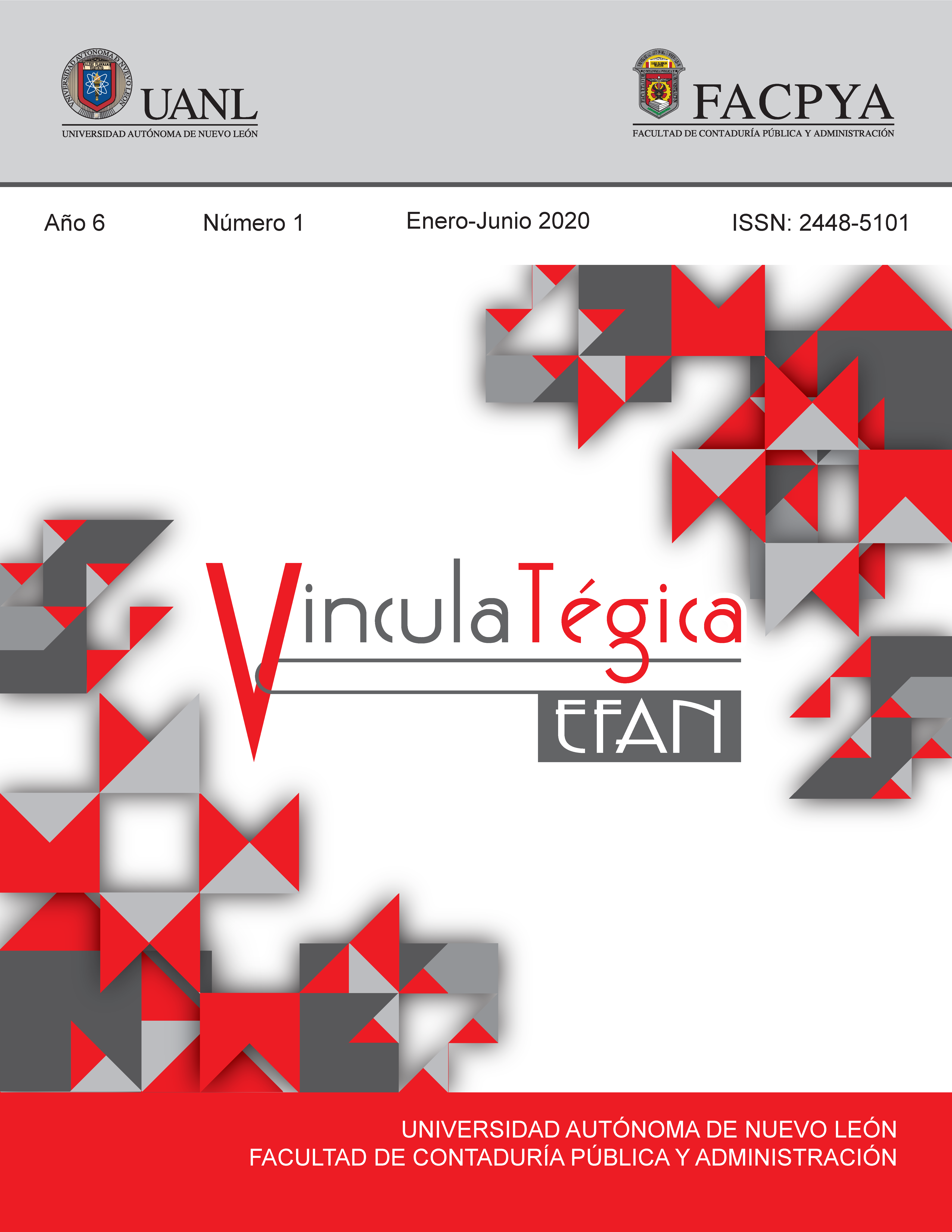Las Jornadas laborales y la cultura organizacional como desencadenantes del Síndrome de Burnout en el personal de salud: una revisión de literatura
DOI:
https://doi.org/10.29105/vtga6.1-644Keywords:
Burnout, Jornadas Laborales, Cultura Organizacional, Profesionales de la SaludAbstract
Burnout Syndrome is the product of chronic work
stress. It is common to find that within organizations,
workers are under a lot of pressure, which in the end
affects both the organization and the employee's
health, the result of so many pressures is stress.
Currently, health professionals are among the
workers with the highest job demands and pressure
within their work environment. Hospitals working
hours and organizational culture may be affecting the
health of professionals and developing levels of stress
so high that they lead to the appearance of Burnout
Syndrome. This research has as a general objective,
to carry out a literature review in order to identify the
existing information about working hours, the
organizational culture and Burnout Syndrome and
thus know the fundamental concepts of the subject for
future research.
Downloads
References
ACGME (2019). Common Program Requirements (Fellowship). Obtenido de https://www.acgme.org/Portals/0/PFAssets/ProgramRequirements/CPRFellowship2019.pdf
Bennett, S., & Miller, L. (1999). Public Sector Health Worker Motivation and Health Sector Reform: A Conceptual Framework. Partnerships for Health Reform, 5(1), 1-45.
Berjón, M. A., Urquijo, M., & Pérez, J. (2018). La mujer en actividades de asistencia a personas mayores. Exposición a factores psicosociales. Seguridad y Salud en el Trabajo(97), 40-43.
Cámara de Diputados del H. Congreso de la Unión. (2019). Ley Federal del Trabajo. México: Dirección General de Servicios de Documentación, Información y Análisis.
Carrillo, Á. (2016). Medición de la Cultura Organizacional. Ciencias Administrativas, 4(8), 62-73.
Días, L., Arab, J., Cotoras, P., Véliz, D., Bitrán, M., Rojas, V., . . . (2016). Evaluación de la carga laboral en residentes Chilenos de especialidades y subespecialidades médicas. ARS Médica, 41(2), 13-20. DOI: https://doi.org/10.11565/arsmed.v41i2.109
Esplana, R., & Etelvina, N. (2017). Síndrome de Burnout y clima organizacional en docentes de la institución educativa la victoria de ayacucho huancavelica-2017. (Tesis Doctoral). Huancavelica, Perú: Universidad Nacional de Huancavelica.
Farzianpour, F., Abbasi, M., Rahimi, A., & Jafari, E. (2016). The relationship between Hofstede Organizational Culture and Employees Job Burnout in Hospital of Tehran University of Medical Sciences 2014-2015. Mater Sociomed, 28(1), 26-31. DOI: https://doi.org/10.5455/msm.2016.28.26-31
Forbes México. (28 de mayo de 2019). OMS clasifica el "burnout" como una enfermedad. Obtenido de https://www.forbes.com.mx/oms-clasifica-desgaste-y-estres-laboral-como-una-enfermedad/
Hofstede, G. (1999). Cukturas y Organizaciones. El Software Mental. La Cooperación Internacional y su Importancia para la Supervivencia. Revista de Estudios Interdisciplinarios en Ciencias Sociales, 3(3), 375-379.
Maslach, C., & Jackson, S. (1981). The measurement of experienced burnout. Journal of occupational behaviour, 2 (2), 99-113. Ministerio de Empleo y Seguridad Social. (2015). Real Decreto Legislativo por el que se aprueba el texto refundido de la Ley del Estatuto de los Trabajadores.
Ministerio de Empleo y Seguridad Social.
NOM. (2018). Norma Oficial Mexicana NOM-035 STPS-2018, Factores de riesgo psicosocial en el trabajo Identificación, análisis y prevención. México: Secretaria del Trabajo y Previsión Social.
OIT (2016). Organización Internacional del Trabajo. Obtenido de Estrés Laboral: https://www.ilo.org/wcmsp5/groups/public/---americas/---ro lima/documents/genericdocument/wcms_475146.pdf
Organización Internacional del Trabajo (1920). El Tratado de Versalles de 1919 y sus Antecedentes. Madrid: Instituto Ibero-Americano de Derecho Comparado.
Organización Internacional del Trabajo (1944). Declaración de Filadelfia. Filadelfia: Organización Internacional de Trabajo.
Organización Mundial de la Salud (2017). Salud mental en el lugar de trabajo: Organización Mundial de la Salud. Obtenido de Organización Mundial de la Salud Sitio web: https://www.who.int/mental_health/in_the_workplace/es/ Ortega, A., Corona, J., Hernández, E., Montaño, O., Garnica, J., Garduño, S., . . . (2015). A systematic model of analysis of organizational culture in health care services. Nova Scientia, 7(3), 321-342. 974
Ramírez, M. (2017). Prevalencia del Síndrome de Burnout y la asociación con variables sociodemográficas y laborales en una provincia de Ecuador. International Journal of Developmental and Educational Psychology, 4(1), 241-252. DOI: https://doi.org/10.17060/ijodaep.2017.n1.v4.1053
Schaufeli, W. (2005). Burnout en profesores: Una perspectiva social del intercambio. Revista de Psicología del Trabajo y de las Organizaciones, 21(1-2), 15-35.
Schein, E. (1983). The Role of the Founder in Creating Organizational Culture. Organizational Dynamics, 12(1), 221-238. DOI: https://doi.org/10.1016/0090-2616(83)90023-2
Downloads
Published
How to Cite
Issue
Section
License

This work is licensed under a Creative Commons Attribution 4.0 International License.
a). Authors keep copyright and give the journal the right of the first publication of the work under a Creative Commons attribution license. This license allows others to share the work as long as original authorship and initial publication in this journal is acknowledged.
b). Authors may make other independent and additional contractual agreements for the non-exclusive distribution of the version of the article published in this journal (e.g., include it in an institutional repository or publish it in a book) as long as they clearly indicate that the work was published for the first time in this journal.







